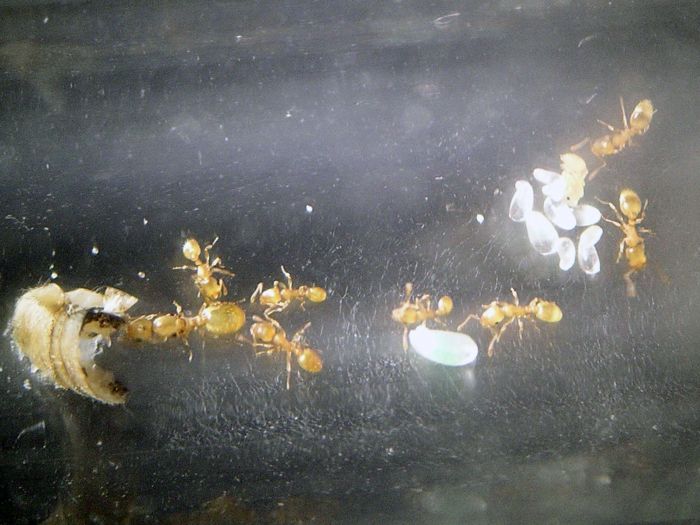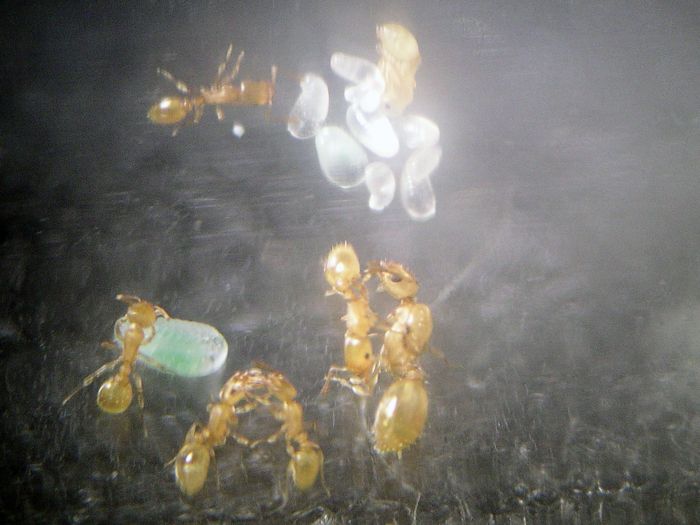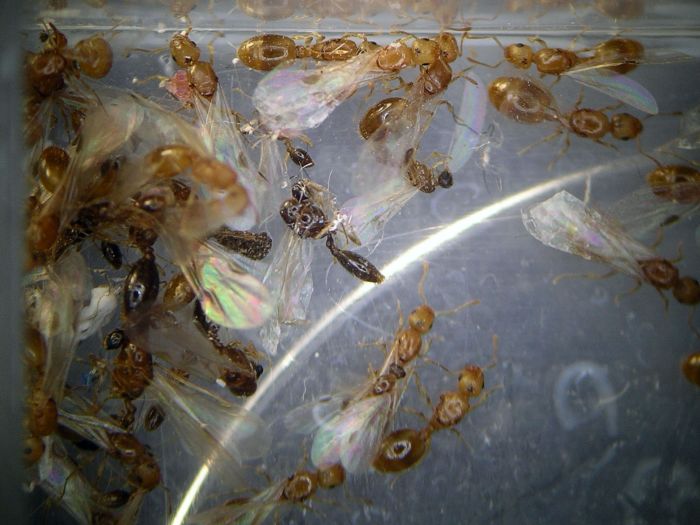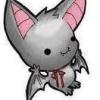I found these Temnothorax queens July 24th 2014 in Trabuco Canyon, California. These were caught shortly after dark, using a black light.
ID Thread: https://www.formicul...php/topic/1736-
1. Location of collection: Trabuco Canyon, California.
2. Date of collection: 4-29-2015.
3. Habitat of collection: Chaparral, oak forest.
4. Length (from head to gaster): 3.5 mm.
5. Color, hue, pattern and texture: Desaturated maize.
6. Distinguishing characteristics: Hairs short, and appear as if they were chopped off; hairs sparse and very evenly spaced on gaster, with very little pubescence; 12 antennal segments.
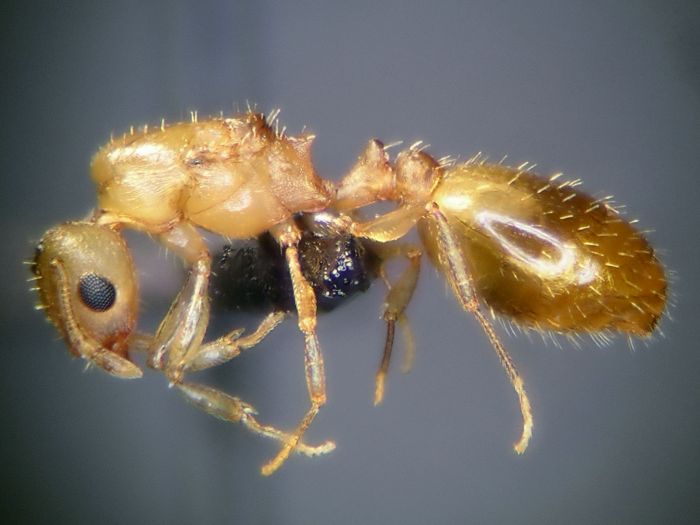
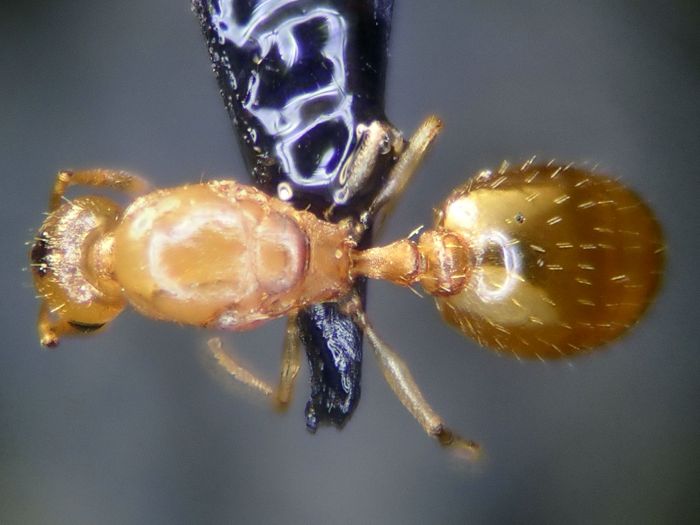
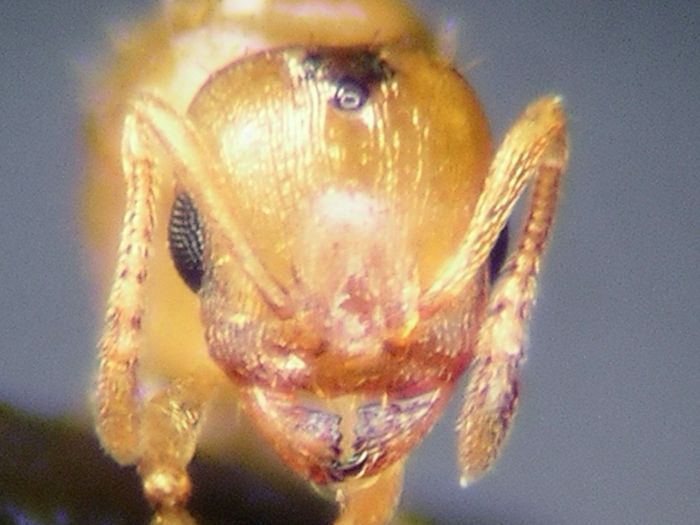
So far two of them seem to be fertile, and just got their first workers a few days ago.
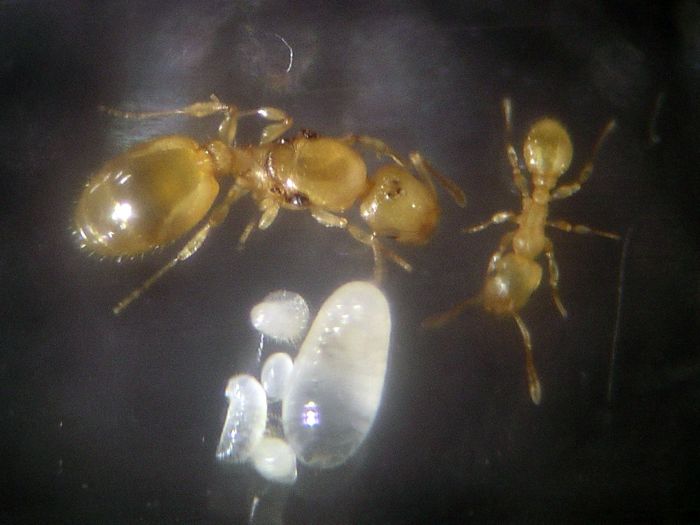
Edit: I had to change a few things with this original post, because I found out I had two different species of Pheidole here.
Edit: Changed this yet again, after finding out these are not Pheidole, but Temnothorax.
Edited by dspdrew, June 20 2020 - 9:16 AM.







